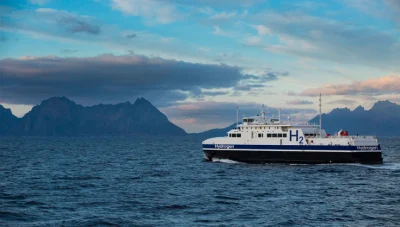The new requirements
There can be no doubt that the recent amendments to MARPOL Annex VI represented a huge shift in the way the maritime industry approaches decarbonisation. So what do these requirements mean for an industry grappling with its mandate to reduce emissions?
On January 1, 2023, new requirements for EEXI and CII came into force, marking a significant step in the maritime industry’s journey to decarbonisation. In simple terms, these regulations require that calculations for energy efficiency and carbon intensity are performed for all ships that fall under their scope so that they can be meticulously and measurably improved in line with emissions targets for 2030 and 2050.
These new requirements represent an important stride towards the International Maritime Organization’s (IMO) goal of decreasing annual greenhouse gas emissions by 50% from international shipping by 2050, compared with 2008 levels.
What do these terms mean?
CII or Carbon Intensity Indicator is a rating system developed by the IMO that applies to commercial vessels at and above 5,000 GT. The system measures how efficiently a ship transports goods or passengers in grams of CO2 emitted per cargo-carrying capacity and nautical mile. The outcome of this calculation determines the annual reduction factor needed to ensure continuous improvement of a ship’s operational carbon intensity within a specific rating level from A (best) to E (worst).
EEXI or Energy Efficiency Existing Ship Index is a measure related to the technical design of existing ships which must be calculated for all ships at and above 400 GT. The EEXI requires an assessment to be performed on each ships’ energy consumption and CO2 emissions against specific requirements for energy efficiency for each vessel type. To do this, ship owners may need to implement technical measures to adjust their vessels’ emissions to the required level.
Decarbonisation must start now
Often, the most impactful changes are the most disruptive. Many in our industry were probably not prepared to take on the challenge of meticulously calculating, assessing, reporting on, and complying with these new requirements, but that was always to be expected. Likewise, it was also to be expected that there would be unforeseen consequences and shortcomings to such a drastically new way of approaching environmental efficiency and emissions reduction.
The road to decarbonisation is not a clear one, but the reality of climate change is already making itself known, and the time to act is now. There are many hurdles still to be overcome in determining how the industry will meet the challenge of reducing its environmental impact, and tomorrow’s technology remains a wild card. Our industry has not unilaterally determined what the ships, ports and energy supplies of the future will look like, making it difficult to know exactly where significant investments should be made now.
In the midst of this uncertainty comes a new set of requirements that are bound to compel change by requiring not only technological, but operational improvements to existing processes. Both EEXI and CII situate the challenge of decarbonisation firmly in the present, requiring owners and operators to take charge of improving their fleets’ environmental impact by honestly assessing their current status and improving their existing standing. Each small advancement that is made to each vessel will play a minor, but significant role in reducing overall emissions. There is hope that in the midst of these incremental improvements, breakthroughs will emerge that will provide a better solution for all.

Finding a balance
The maritime industry is expansive, comprising a large ecosystem of participants, each with their own goals and revenue mechanisms. Shipping is one of the purest supply and demand markets there is, and the tension between all players is what drives it forward. All stakeholders within the maritime ecosystem will be affected by CII and EEXI requirements, not just owners and operators. It will take time to see how everyone will adjust, and some competing interests will need to be resolved.
Split Incentives, a barrier to energy efficiency identified by Sorrell, Mallett & Nye in 2011, occur when a decision-maker does not appropriate the results of increased efficiency, but instead benefits from a lack of efficiency. This can hinder energy optimisation and emissions reduction.
A good example of this is in chartering; when the spot rate for certain vessels is high, it can be cheaper for charterers to try to minimise charter time and attempt to arrive at their destination as quickly as possible by traveling at high speeds and burning more fuel.
On the flip side, another example is demurrage. In many charter party contracts between ship owners/ managers and charterers, the former is incentivized to incur demurrage charges which accumulate the longer a vessel waits at port for cargo to be available for loading. As a result, the shipping company is inclined to rush their vessel to port at higher speeds, burning significant fuel to arrive early and maximise wait time.
Revenue mechanisms such as these will need to be evaluated and resolved in the years to come if emissions targets are to become a reality.
Looking to the precedent of previous regulations, we can expect that eventually our industry will settle into a new status quo. In the meantime, however, we can expect that there will be contractual and commercial disputes, as well as critiques of the overall effectiveness of requirements. This is all part of a process that is sure to remain dynamic over the coming decades.
The importance of data and digital maturity
One thing that is certain is that access to data will be vital. Companies with digital maturity and the ability to gather, analyse, report on and action data, will be better positioned to adapt to evolving reporting requirements and make the strategic investments necessary to reduce emissions. Regulations are expected to become more stringent in the years to come, and this will necessitate a better, smarter way of working for all.
